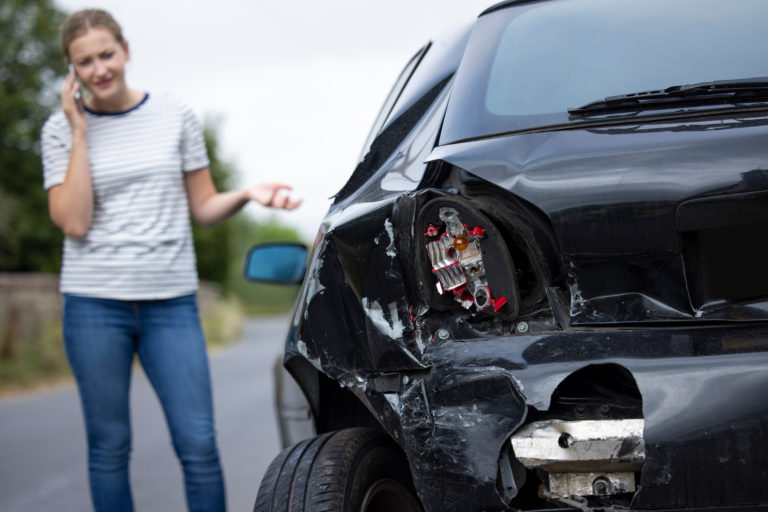
Rear-end collisions happen in Jacksonville every day. You could be sitting in your car at a red light, looking into your rearview mirror as a distracted driver is about to plow into you. How you prepare for a rear-end car crash could help reduce the severity of your injuries.
Rear-end crashes represent one third of all crashes and are the most common type of motor vehicle crash in the U.S., according to the National Highway Traffic Safety Administration (NHTSA). While few are deadly, they are a major cause of property damage and injuries.
Rear-end Collisions: Tips
There are a few steps you can take to help minimize injuries in a rear-end collision. When stopping at slowed traffic, leave plenty of room between you and the car in front you. That way, if you’re hit from behind at the last minute, you’ll have extra room in front of you to minimize the impact and possibly avoid hitting the car in front of you.
Be alert and keep an eye on traffic behind you. If you see a vehicle about to crash into you and the shoulder next to you is clear, you might be able to change lanes to avoid a collision. Make use of your lights. If you’re about to be hit from behind or there is an unexpected slowdown or stop in front of you, tap on your brakes a few times and flash your brake lights so the car behind you sees them.
If you are about to be rear-ended, press your back and head against your seat and headrest while holding the steering wheel with both hands. Gently tap on the brakes to avoid hitting vehicles in front of you.
Adjusting Your Headrest
Make sure your head rest is properly adjusted. This can help reduce injuries to your neck and spine. According to NHTSA, when adjusting the headrest for height, the majority of it should sit at the ear level directly behind the driver’s head. Headrests should be positioned two to four inches away from the back of your head.
If an accident happens, the headrest should contact your head first and not your neck. If it contacts your neck first, it will actually increase injury. Lastly, make sure your headrest is lined up correctly. Have someone else look at it while you’re sitting in your car to ensure it’s at the correct level.
Although most rear-end crashes happen at low speeds, the injuries from them can be serious and chronic. Auto accident victims may suffer whiplash injuries at speeds 10 m.p.h. or less, despite the fact there is often little or no damage to their bumper.
Taking these precautions could help you stay safer on the roadways if you’re involved in a rear-end collision.
If you have been injured in an auto accident from a rear-end crash, it is important to consult with an experienced auto accident attorney who has the resources to vigorously pursue justice on your behalf, which includes pursing your case in civil court.

